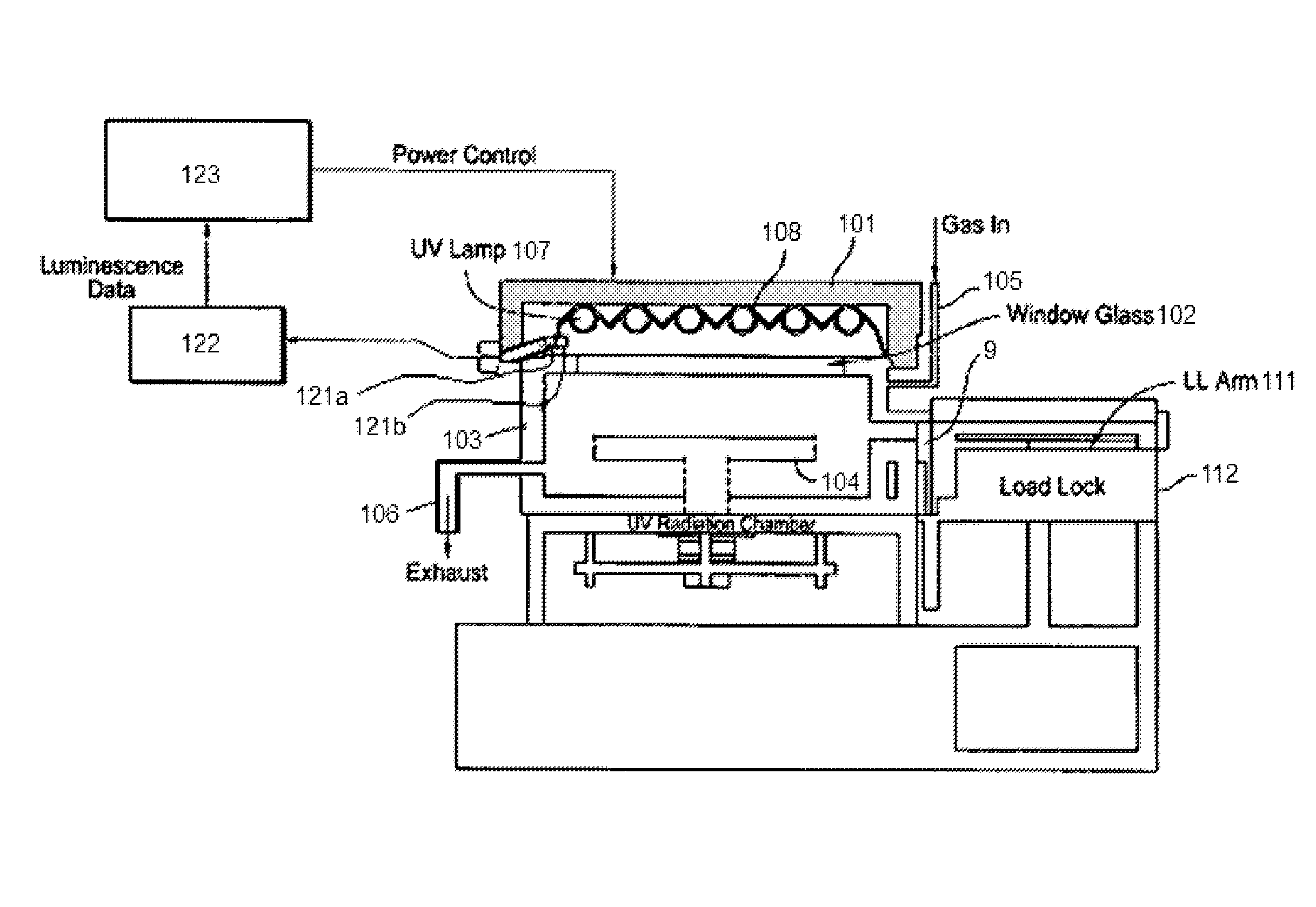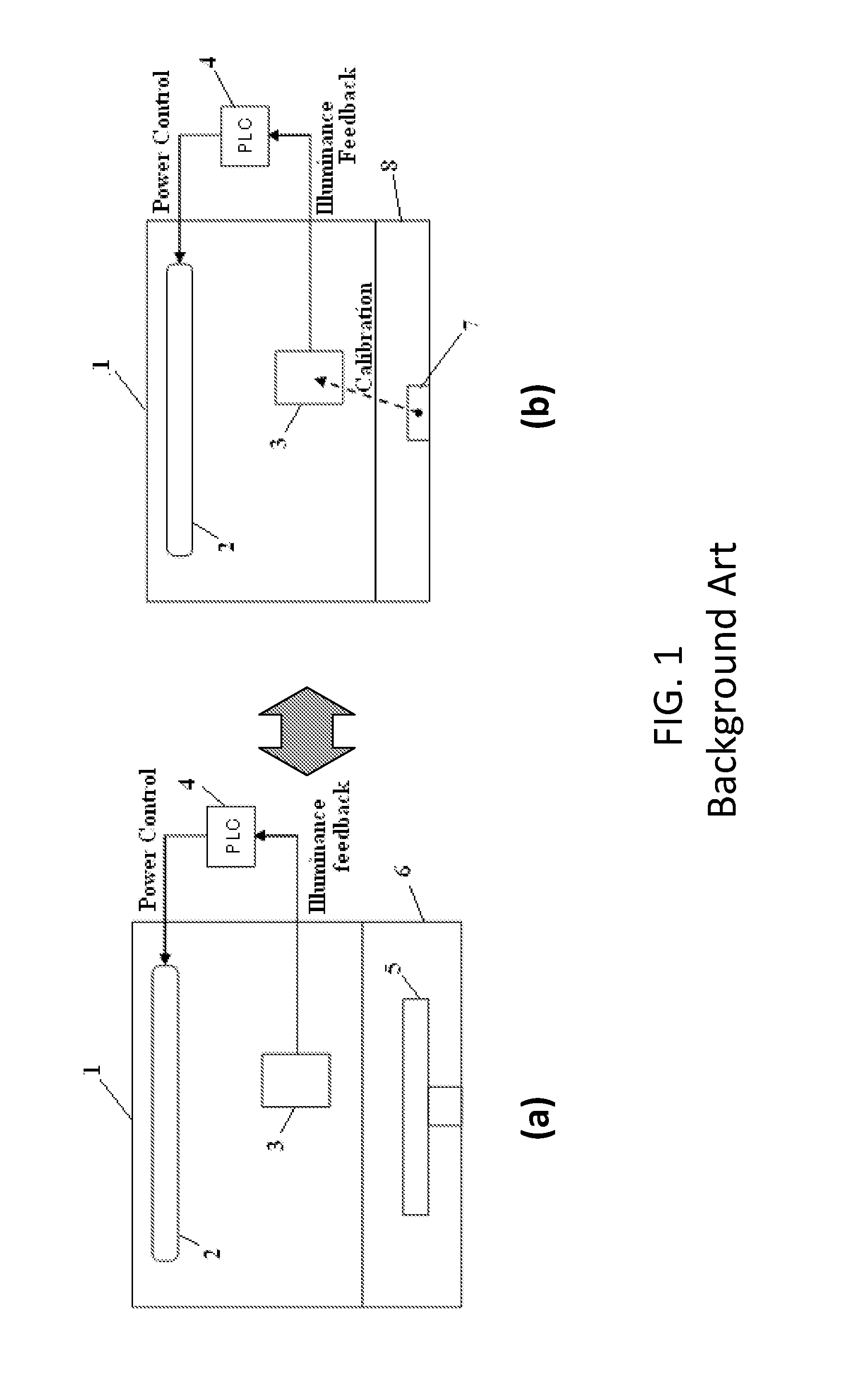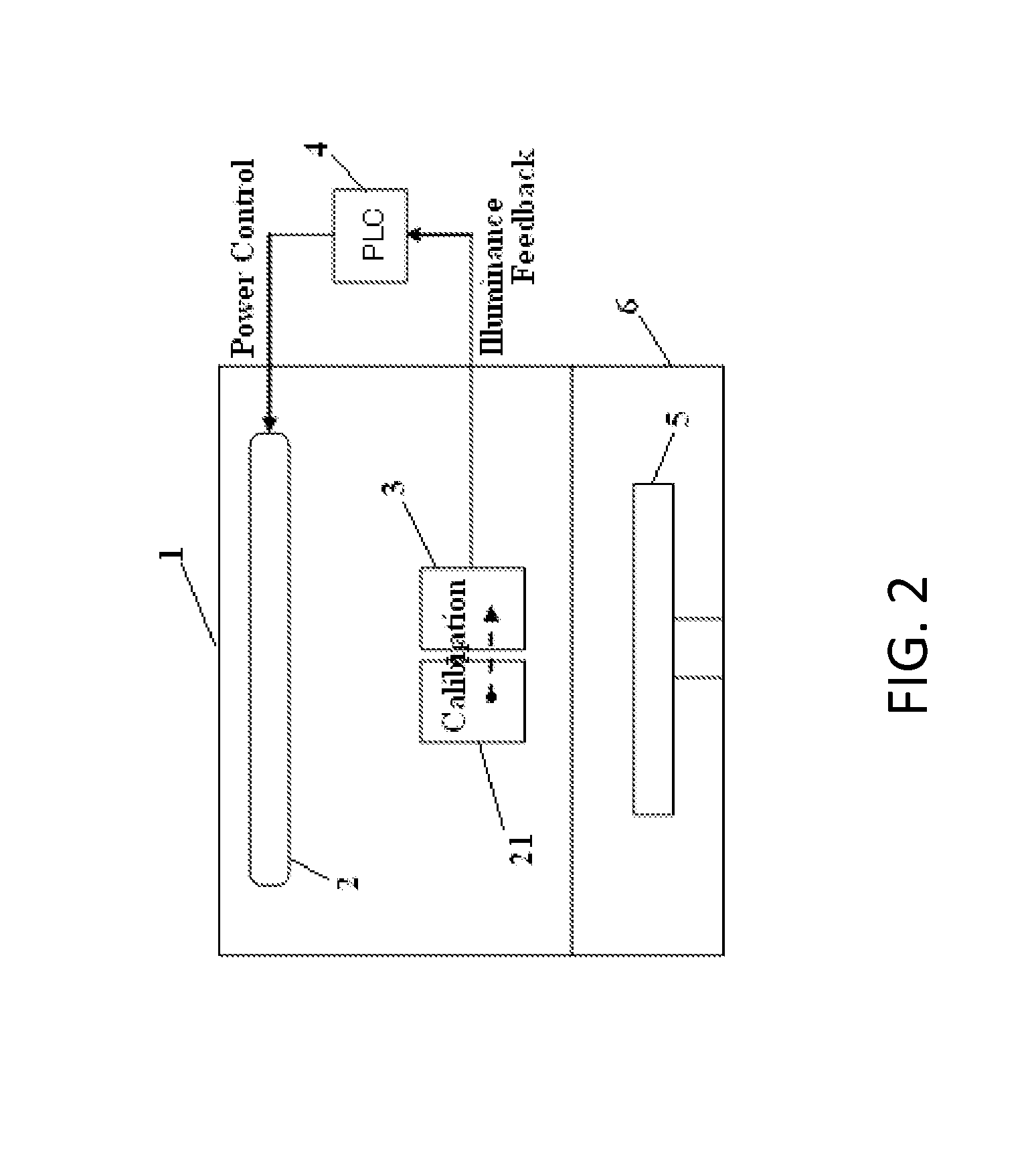Calibration method of UV sensor for UV curing
a technology of uv sensor and calibration method, which is applied in the direction of optical radiation measurement, instruments, semiconductor/solid-state device testing/measurement, etc., can solve the problems of reducing the accuracy of calibration, so as to reduce the exposure and eliminate environmental or external calibration errors , the effect of high accuracy
- Summary
- Abstract
- Description
- Claims
- Application Information
AI Technical Summary
Benefits of technology
Problems solved by technology
Method used
Image
Examples
example 1
Illuminance Retention Ratio of UV Feedback Sensor and UV Calibration Sensor
[0055]An apparatus shown in FIG. 2 was used, wherein the UV lamp was a mercury lamp. A UV feedback sensor and a UV calibration sensor were of the same type for measuring light having a wavelength of 365 nm. Both the sensors were provided with shutters which were capable of opening for monitoring illuminance. The UV lamp was turned on by inputting 60% of full power for 120 seconds, and then 100% of full power for 600 seconds. This cycle of 60% and 100% constituted one cycle, and the UV lamp continuously emitted UV light by repeating the cycle for this experiment wherein no substrate was placed on a heater. By using a pulse of 60% of full power, overheating the apparatus was avoided.
[0056]The illuminance from the UV lamp changed over time due to deterioration of the UV lamp itself. First, in order to determine deterioration of the UV lamp, illuminance was measured using the UV calibration sensor which was expos...
example 2
Operation Rate of Using UV Feedback Sensor and UV Calibration Sensor
[0064]The same system as in Example 1 was used, and the shutter of the UV feedback sensor opened every 10 hours, whereas the shutter of the UV calibration sensor opened every 100 hours. No external calibration was conducted. The time used for this in-situ calibration was considered as downtime, and the operation rate was determined. The operation rate was defined as a ratio of (T-D) / T per month (F: total operation time of the UV lamp, D: downtime).
[0065]In comparison, the same system as in Example 1 and an external UV sensor of the same type were used. The shutter of the UV feedback sensor opened every 10 hours, whereas the shutter of the UV calibration sensor remained closed. External calibration was conducted every 100 hours, 200 hours, and 300 hours, using the external UV sensor. The time used for this external calibration was considered as downtime, and the operation rate was determined.
[0066]The results are sho...
PUM
 Login to View More
Login to View More Abstract
Description
Claims
Application Information
 Login to View More
Login to View More - R&D
- Intellectual Property
- Life Sciences
- Materials
- Tech Scout
- Unparalleled Data Quality
- Higher Quality Content
- 60% Fewer Hallucinations
Browse by: Latest US Patents, China's latest patents, Technical Efficacy Thesaurus, Application Domain, Technology Topic, Popular Technical Reports.
© 2025 PatSnap. All rights reserved.Legal|Privacy policy|Modern Slavery Act Transparency Statement|Sitemap|About US| Contact US: help@patsnap.com



